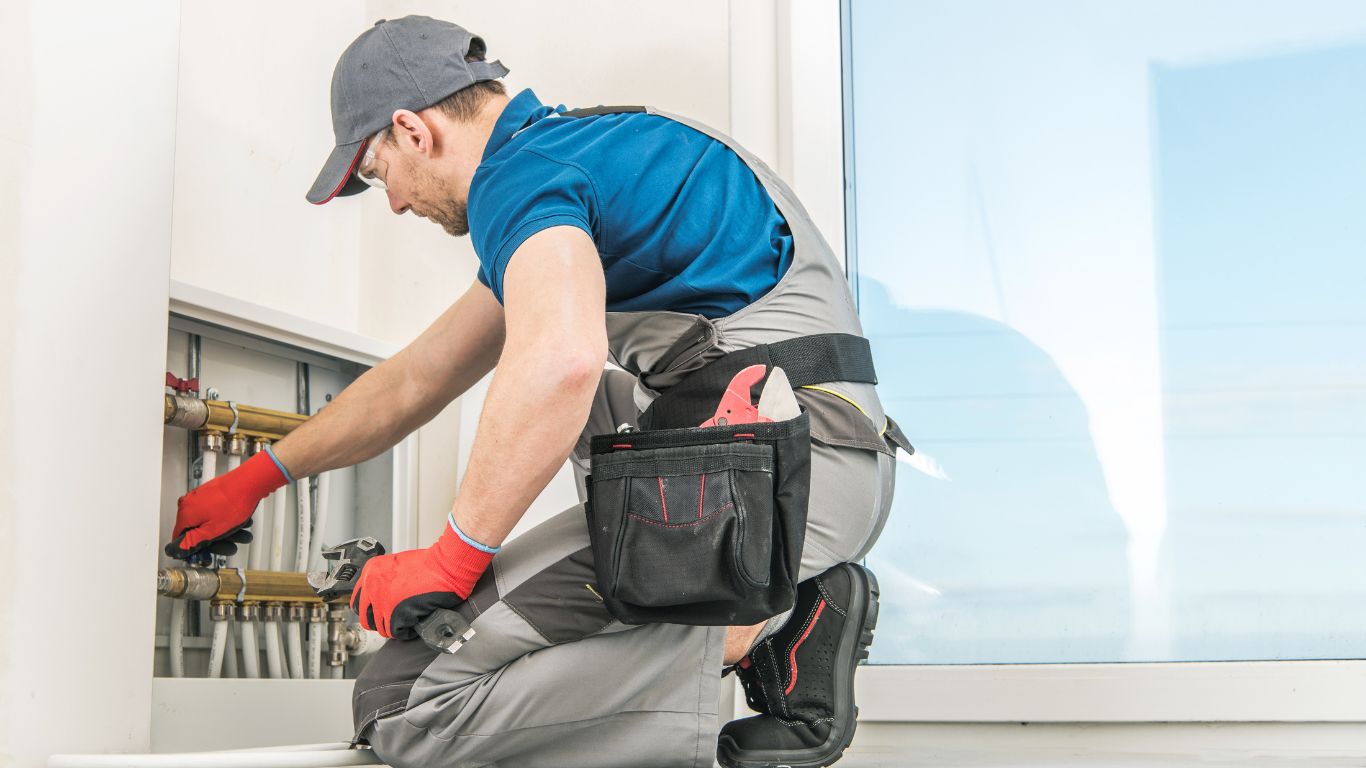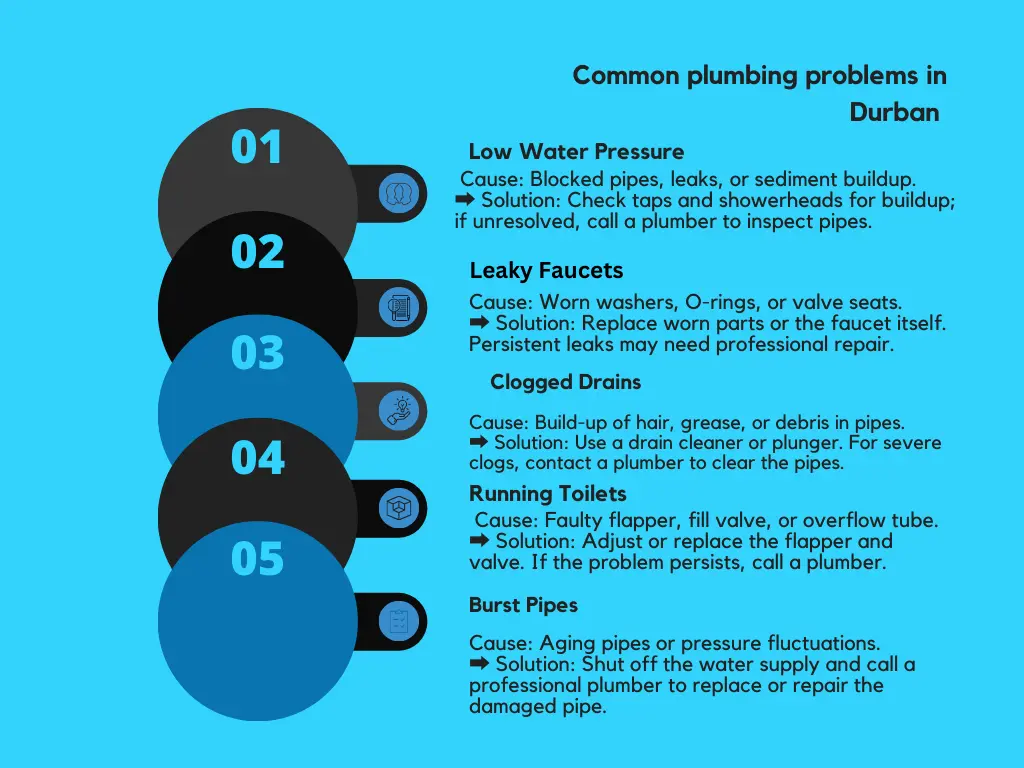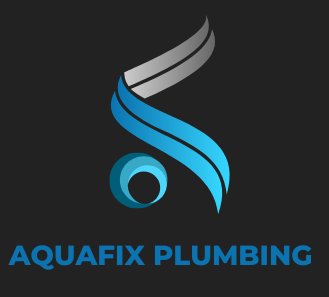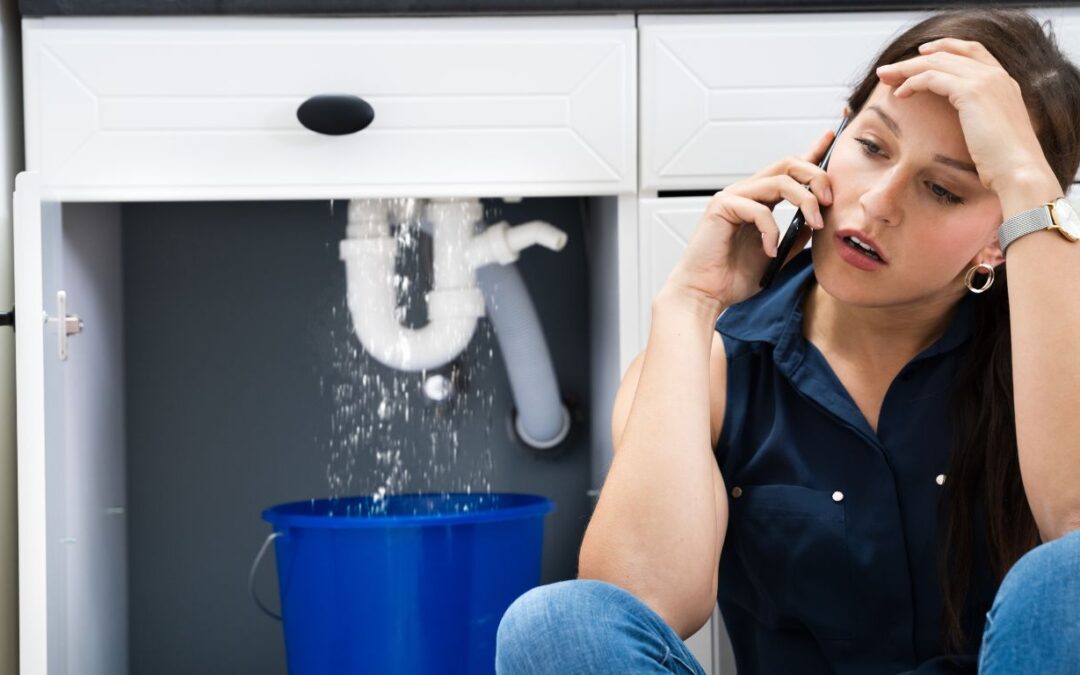Durban Residents: Don't Let Plumbing Problems Drain Your Wallet!
The subtropical climate in Durban can lead to unique plumbing challenges. But don’t worry! By finding these issues early, you can save yourself time and costly repairs down the line.
1. Clogs and Blockages
Clogs are the usual suspects when it comes to plumbing issues. They can affect things such as sinks, toilets, showers, or even your main sewer line.
- What causes clogs? Hair, soap scum, food scraps, grease, and even tree roots (in older homes) are common culprits.
- How to spot a clog: Watch out for slow draining water, gurgling sounds, foul odors, and toilet backups.
- How to tackle clogs: Start with a plunger or drain snake.
2. Leaks
Leaks waste water and can wreak havoc if not addressed promptly.
- Where do leaks come from? Worn-out washers and seals, corroded pipes, high water pressure, or cracked pipes.
- Signs you have a leak: Look for damp spots, unusually high water bills, mold growth, and the sound of running water when fixtures are off.
- How to fix leaks: Tighten connections, replace worn parts, and use sealant tape where needed. For leaks in walls or under concrete, get in touch with a professional plumber.
3. Dripping Faucets
That annoying drip is more than just an irritation – it’s wasted water and money.
- What causes dripping faucets? Worn-out washers or O-rings, a corroded valve seat, or an improperly installed faucet.
- The consequences of dripping faucets: Higher water bills and potential damage to sinks and countertops.
- How to stop the drip: Turn off the water supply, take apart the faucet (remember the order of parts!), replace worn components, and reassemble.
4. Running Toilets
A running toilet is a silent water waster.
- Why does your toilet keep running? It could be a faulty flapper valve, misaligned float, or worn-out fill valve.
- The impact of a running toilet: Wasted water, higher water bills, and the possibility of the toilet flushing on its own (phantom flushing).
- How to fix a running toilet: Check and replace the flapper valve, adjust the float, or replace the fill valve as needed.
5. Low Water Pressure
Low water pressure is a real problem
- What causes low water pressure? Leaks, clogged aerators or showerheads, a faulty pressure regulator, or issues with the municipal supply.
- How to restore water pressure: Fix leaks, clean aerators and showerheads, and if needed, call in a professional to check the pressure regulator or investigate clogged pipes. If your neighbors are experiencing low pressure too,contact the municipality.
Tips for Durban Homeowners – 24/7 plumbing service
- Consider a water softener: If you have hard water, a softener can prevent clogs and extend the lifespan of your plumbing system.
- Schedule yearly plumbing checkups: A plumber can catch potential problems before they become major issues.
- Learn basic DIY plumbing skills: Knowing how to fix minor issues can be a real lifesaver.
- Be mindful of what goes down the drain: Avoid pouring grease, coffee grounds, or other clog-inducing substances down your sink.
If you’re not sure about about plumbing issue, don’t hesitate to get in touch with your Trusted Durban plumber for all your home’s needs on 072 641 3447 With proper care and attention, your plumbing can serve you well for years to come.

Plumbers FAQ Guide
Why are my drains in Durban so slow?
What causes low water pressure in homes?
Low water pressure can be caused by a few things
- Municipal Issues: Sometimes, the city’s water supply has reduced pressure. Check with your neighbors or the municipality to see if there are any known problems.
- Clogged Pipes: Mineral buildup or debris in your pipes can restrict water flow.
- Leaky Pipes: Even a small leak can significantly reduce water pressure.
my toilet keeps running. What can I do?
What is the first step in the troubleshooting process for a plumber?
The first step in the troubleshooting process for a plumber is to find the problem. This involves gathering information from the customer about the issue they are experiencing, such as:
- The nature of the problem: Is it a leak, a clog, low water pressure, or something else?
- The location of the problem: Which fixture or area of the plumbing system is affected?
- The duration of the problem: How long has the issue been occurring?
- Any recent changes or events: Has any work been done on the plumbing system recently, or have there been any unusual occurrences that might be related to the problem?
Once the plumber has a clear understanding of the problem, they can proceed to the next step, which is to diagnose the cause and develop a plan to fix it.

Plumbing problems, such as weak water pressure, running toilets, or issues with your hot water heater, can disrupt daily life and increase your water bill. Problems with sewer lines or copper pipes may also arise. Ignoring these common plumbing issues can lead to bigger damage. If you’re facing any of these problems, it’s best to call a plumber to make sure everythings back in working order.


Recent Comments